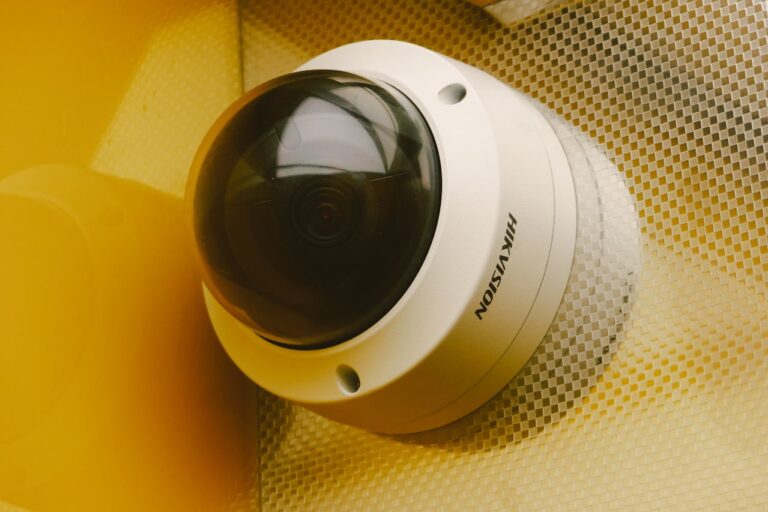Introduction
Parking security at government facilities is a critical component of overall institutional safety. As public servants and visitors access government buildings daily, secure parking areas help prevent unauthorized access, theft, vandalism, and potential security threats. In South Africa, where crime rates can be a concern, government institutions must implement comprehensive security measures to protect employees, visitors, and state assets.
Effective parking security requires a combination of physical security measures, technology, and well-defined protocols. Security managers play a pivotal role in ensuring that these measures are properly implemented and maintained. This article explores best practices in parking security at government facilities and highlights the role of security managers in mitigating risks.
The Importance of Parking Security at Government Facilities
Government institutions house critical infrastructure, confidential information, and public officials, making them potential targets for criminal activity. A poorly secured parking facility can lead to:
- Vehicle Theft and Vandalism – Criminals may target government vehicles or personal vehicles of employees and visitors for theft or damage.
- Unauthorized Access – Unrestricted parking areas can be exploited by unauthorized individuals attempting to gain access to government premises.
- Security Threats – In extreme cases, unmonitored parking areas can be used for illicit activities, including the planting of explosive devices or staging of criminal acts.
- Employee and Visitor Safety Concerns – Inadequate lighting, lack of surveillance, and limited security personnel presence can make government parking facilities hotspots for muggings and carjackings.
To address these risks, government institutions must adopt a proactive approach to parking security by integrating international best practices and leveraging the expertise of security managers.
Best Practices for Parking Security at Government Institutions
A comprehensive parking security strategy should include a mix of physical security measures, access control protocols, surveillance technologies, and personnel deployment.
-
Controlled Access and Entry Points
One of the most effective ways to secure a government parking facility is by limiting access to authorized personnel and visitors. This can be achieved through:
- Boom Gates and Automated Barriers – These prevent unauthorized vehicles from entering parking areas without clearance.
- Access Control Systems – Employee and visitor identification should be verified using RFID (Radio Frequency Identification) cards, biometric scanners, or QR code-based entry systems.
- Visitor Registration Process – Temporary parking permits should be issued for visitors, with records maintained to track access.
By controlling entry points, institutions can significantly reduce unauthorized access and security risks.
-
Surveillance and Monitoring Systems
Government parking areas should be equipped with modern surveillance technology to monitor activity and deter criminal behaviour. Key measures include:
- CCTV Cameras – High-resolution cameras should be strategically placed at entry/exit points, blind spots, and high-risk areas.
- License Plate Recognition (LPR) Technology – This technology helps track vehicles entering and exiting the facility, assisting with investigations in case of security incidents.
- 24/7 Monitoring – Security personnel should monitor live feeds in a control room to respond promptly to any suspicious activity.
Regular audits should be conducted to ensure surveillance systems remain operational and up to date.
-
Adequate Lighting and Environmental Design
Poorly lit parking areas create opportunities for crime. Implementing proper lighting and Crime Prevention Through Environmental Design (CPTED) principles can enhance security. Recommendations include:
- Bright LED Lighting – Parking areas, pedestrian walkways, and entrances should be well-lit to eliminate dark corners.
- Clear Signage and Markings – Security-related signage should be displayed, including emergency contact numbers and restricted access zones.
- Elimination of Hiding Spots – Landscaping should be maintained to prevent dense bushes or structures that can serve as hiding places for criminals.
A well-lit and properly designed parking facility fosters a sense of safety and reduces potential threats.
-
Security Patrols and Personnel Deployment
While technology is vital, a human security presence remains one of the most effective deterrents against crime. Measures include:
- On-Site Security Officers – Trained personnel should conduct regular patrols, especially in large government parking areas.
- Mobile Patrols and Response Teams – Security teams should be equipped with vehicles or bicycles to respond quickly to incidents.
- Emergency Call Stations – Strategically placed emergency stations allow employees and visitors to request assistance in case of danger.
Security personnel should be well-trained in incident response, crowd control, and emergency evacuation procedures.
-
Employee and Visitor Awareness Programs
A strong security culture begins with awareness. Public servants and visitors should be educated on parking security best practices, such as:
- Locking vehicles and not leaving valuables in plain sight.
- Reporting suspicious activity to security personnel immediately.
- Using designated pedestrian walkways and avoiding isolated areas at night.
Periodic security briefings and awareness campaigns can reinforce these habits and contribute to overall safety.
The Role of Security Managers in Parking Security
Security managers play a central role in developing and enforcing parking security protocols within government institutions. Their responsibilities include:
-
Risk Assessment and Security Planning
Security managers must conduct comprehensive risk assessments to identify vulnerabilities in parking security. This includes analysing crime trends, reviewing past incidents, and evaluating the effectiveness of current security measures. Based on findings, they should develop tailored security plans aligned with institutional needs.
-
Implementation of Security Policies and Procedures
Security managers are responsible for establishing and enforcing parking security policies. These may include:
- Access control guidelines for employees and visitors.
- Vehicle inspection procedures at entry points.
- Protocols for handling lost or stolen access cards.
Clear policies ensure uniform enforcement of security measures across government facilities.
-
Coordination with Law Enforcement and Emergency Services
Collaboration with local law enforcement is crucial for enhancing parking security. Security managers should maintain direct communication with police services and emergency responders to ensure swift action in case of incidents. Periodic security drills can help improve response times and coordination.
-
Training and Development of Security Personnel
Security personnel require ongoing training to stay effective. Security managers must facilitate:
- Regular refresher courses on access control and threat detection.
- Crisis management and conflict resolution training.
- Familiarization with new security technologies and equipment.
A well-trained security team ensures that government parking facilities remain secure and well-managed.
-
Continuous Evaluation and Improvement
Security threats evolve over time, requiring continuous evaluation and adaptation. Security managers should:
- Conduct regular security audits to identify gaps.
- Upgrade security technology as needed.
- Gather feedback from employees and visitors to refine security strategies.
By staying proactive, security managers can anticipate and mitigate potential risks before they escalate.
Conclusion
Parking security at government facilities is a fundamental aspect of overall institutional safety. Implementing controlled access, surveillance systems, adequate lighting, security personnel deployment, and awareness programs can significantly enhance protection against threats. Security managers play a crucial role in developing, implementing, and maintaining these measures to ensure a safe environment for public servants and visitors.
By prioritizing parking security, government institutions in South Africa can reduce risks, protect state assets, and foster a secure workplace that promotes efficiency and public confidence.
If you are interested in advanced targeted security management training, have a look at our Security Management (Advanced) Course Track by following the link below. We also offer training and workshops on many other security and CI related topics, including the one covered in this blog post.







